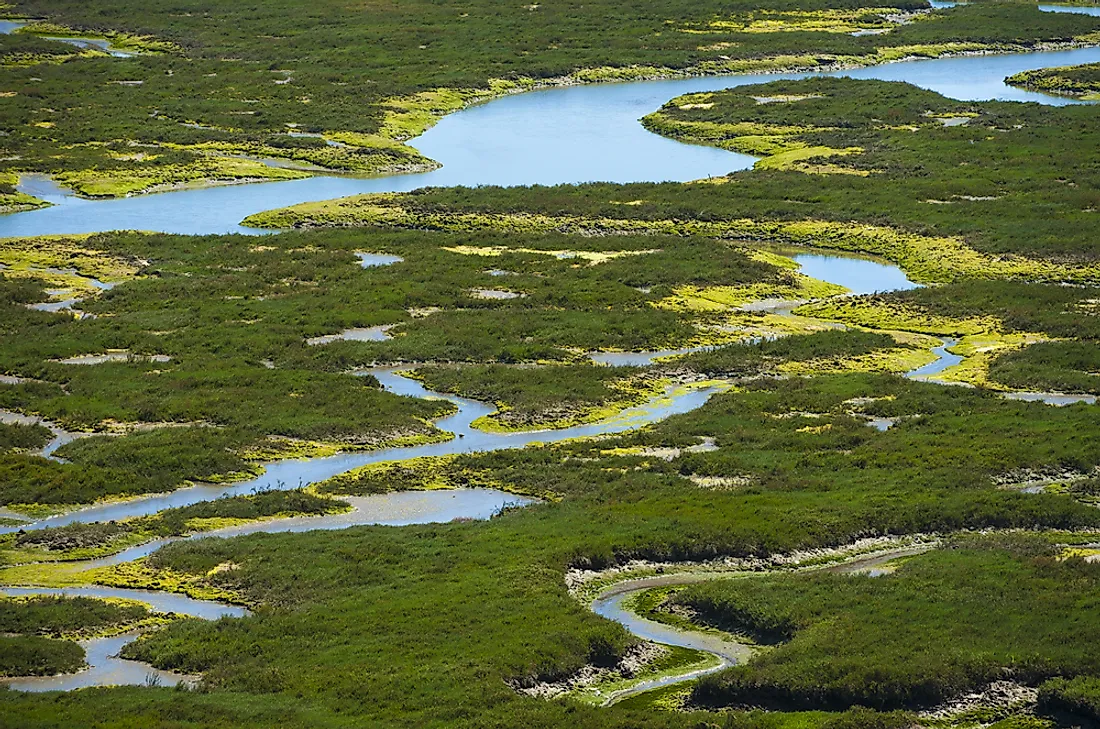What Is A Slough?

A slough is a wetland which is characterized by slow-moving or stagnant water on a seasonal basis. The term slough is used to describe wetlands like shallow lakes and swamps. A slough is a natural side-channel or an inlet filled with water. These wetlands tend to form along the river edges where old river channels used to flow also referred to as the oxbows.
How Are Sloughs Formed?
A slough is created when a meander is discontinued from the primary river channel forming a U-shaped water body known as an Oxbow lake. The oxbow lake is accumulated with organic materials like peats and fine over-bank sediments. The presence of an oxbow lake creates a swamp or wetland environment. One end of the U-shaped water body continues receiving flow from the river thus creating a slough. Slough formation is associated with the creation of ridges found in the oxbow lakes.
The edge of the slough has numerous sediment layers deposits. Different deposits mounted on surrounding bedrocks are elongated along the slough. The micro-topography variations trigger the rate of peat accumulation which affects the vegetation type and also plants production. The flow of water inhibits the accumulation of organic sediment which can promote vegetation growth while lowering the depth of water.
What Is the Primary Cause of Slough Degradation?
Although there is little quantitative data on slough landscape degradation, ridges and sloughs degrade both vegetative and topographically over time. Vegetation changes are characterized by a decrease in open water area and increase in dense grasses. Topographic changes increase the relief between slough bottom and ridge crests. Historically the slough landscape has been affected by human activities. The slough supports crucial ecological functions which are sensitive to the quality of water. Human activity is the primary cause of water pollution in this environment.
The Different Types of Plants and Animal Species Living in the Slough
The slough is a unique microhabitat characterized by species diversity. The open water has floating and submerged vegetation like periphytons mats which are dominated by the sawgrass. The plant and topographical heterogeneity of slough and the ridge landscapes determine the diversity and productivity of the fish and birds living in this wetland. The different types of fishes living in this environment include top-smelt, mosquito-fish, California killifish, and tidewater goby. These fishes feed on plant material and zooplankton.
Sloughs are excellent bird-watching spots. Elkhorn Slough is one of the best in the Western United States. More than 340 different bird species visit this wetland, and this includes even some endangered and rare bird species. Some of the bird species spotted in Elkhorn Slough include White-tailed kite, Snowy Plover, Great Horned-Owl, Great Blue Heron, Brown Pelican, and the Acorn Woodpecker.
Which Factors Determine the Slough Vegetation Pattern?
The slough supports a wide variety of plants which are adapted to the ever-changing physical conditions like depth, oxygen levels, and salinity. The slough vegetation pattern is determined by their distribution, duration in the environment and the water depth. These variables also affect the seasonal movement, reproduction, abundance, and distribution of terrestrial and aquatic life within the slough.











